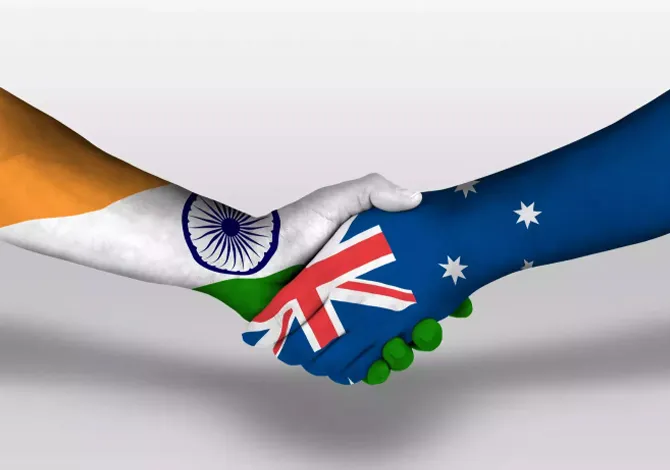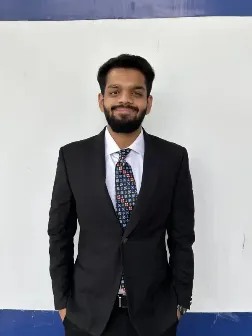-
CENTRES
Progammes & Centres
Location
Close collaboration between India and Australia can pave the way to extract critical minerals by undertaking seabed mining in a responsible and sustainable manner

Exploration and exploitation of mineral resources on the seabed–known as seabed mining–has garnered renewed interest due to advances in deep-sea technology. HMS Challenger’s discovery of polymetallic nodules in the 1800s apprised the world of the existence of mineral deposits on the ocean floor. Further discovery of polymetallic sulphides and cobalt-rich ferromanganese crusts has made the seabed a known repository of minerals such as copper, cobalt, manganese, iron, lithium, and rare earth elements. Great opportunities exist within existing arrangements for Australia and India to sustainably and responsibly unlock this new source of critical minerals in tandem.
Seabed mining, however, raises significant environmental impact concerns. The process of extracting polymetallic nodules involves mining machinery cutting approximately 5cm of the seabed. Nodules are pumped up, cleaned and separated after which the remaining sediment is deposited back at mid-ocean level. Mining polymetallic sulphides and ferromanganese crusts involve cutting rock at hydrothermal vents and seamounts respectively.
While some research does document the impact of mining on marine ecosystems, the extensive gap in scientific knowledge about deep-sea ecosystems precludes an evidence-based impact assessment. The potential environmental impact, compounded by a lack of information on its extent, is a major obstacle for both India and Australia in pursuing seabed mining. More recently, this position was echoed by Australia’s Environment Minister Tanya Plibersek who is “concerned about the broad and unknown environmental impacts”. However, her statement did not completely rule out the possibility of seabed mining and instead stated that it should not take place “unless strong environmental regulations are in place.”
This sentiment stems from the potential economic and geopolitical benefits of seabed mining. Earning the title of ‘critical’ due to their importance, and prevailing global supply risk, the Central Indian Ocean Basin (CIOB) alone is estimated to hold 4.7 million tonnes of nickel, 4.29 million tonnes of copper, 0.55 million tonnes of cobalt and 92.59 million tonnes of manganese. Lying in the ‘Area’, i.e., the seabed and ocean floor and subsoil thereof, beyond the limits of national jurisdiction (Article 1(1) UNCLOS), these estimates are in addition to those available within the continental shelves of coastal states i.e., within national jurisdiction. This figure surpasses any current or estimated land-based extraction figures and potentially offers a steady supply of such minerals which are currently marred with volatility, scarcity, and geopolitical uncertainty. Further, these minerals are becoming increasingly critical for battery storage and electric vehicle technology, important to support energy transition processes and sustainable futures.
Current collaboration between Australia and India, thus, should be expanded to include research in sustainable seabed mining.
The issue in addition to the lack of directed research, is the lack of available technology in both India and Australia which compounds the difficulty in conducting effective impact assessments that are critical to putting in place robust regulations.
Current collaboration between Australia and India, thus, should be expanded to include research in sustainable seabed mining. This could include joint deep-sea ecosystem exploration; co-development of environmental impact assessment frameworks and management plans; and commercialisation of deep-sea technologies which could make the process more efficient and environmentally sound. Current engagement under the Australian government’s An Update to An India Economic Strategy to 2035: Navigating from Potential to Delivery (IES) has placed partnerships with India in critical minerals as a priority. To that effect, an India-Australia Critical Minerals Research Partnership (CMRP) was established to “strengthen supply chains, add value to Australian exports, and work with India to commercialise technology. The CMRP, therefore, could be the appropriate platform under which such engagement could take place.
This partnership is led by Australia’s national science agency, the Commonwealth Scientific and Industrial Research Organisation (CSIRO), which seeks to work with Indian and Australian researchers, industry and government to draw on complementary capabilities, combine expertise, and fast-track cutting-edge research and technology.
This partnership is led by Australia’s national science agency, the Commonwealth Scientific and Industrial Research Organisation (CSIRO), which seeks to work with Indian and Australian researchers, industry and government to draw on complementary capabilities, combine expertise, and fast-track cutting-edge research and technology. A key component of the CMRP remains to “unlock commercial benefits of commencing, improving and integrating Indian and Australian critical minerals value chains.” Run under CSIRO’s Mineral Resources Processing Programme, projects are to be conducted over 3.5-years and seek to contribute to diversified, resilient, and responsible critical mineral supply chains, expand critical mineral industries, and commercialise innovative Australian and Indian technologies. CMRP funds CSIRO projects designed to deliver to CMRP objectives and has so far received AU$ 35.7 million in funding. The nature of projects being undertaken includes “development of novel IP to help unlock Australian vanadium deposits and enable the production of battery materials at commercial scale”.
Undertaking projects which enable the extraction of mineral resources from the seabed in a responsible and sustainable manner could unlock a diversified and sustainable source of minerals. CSIRO further, also has expertise in deep-sea mining research and is currently leading a consortium to develop an integrated ecosystem assessment and ecosystem-based management framework to gauge the potential impacts of proposed mining activities. Here, collaboration with the Ministry of Earth Sciences, the Government of India and its autonomous institutions such as the National Institute of Oceanography, Goa which has conducted disturbance studies in the past, will be fruitful. Such collaboration will allow experiences from the CIOB to be applied to the Clarion-Clipperton Zone in the Pacific, and afford a better understanding of the similarities and differences between regions. Sharing experiences will allow for more effective tailor-made management approaches.
Moreover, joint development and commercialisation of technology for sustainable mining could go a long way in assuaging concerns of environmental impact through assessment and monitoring. Since technology transfer is a politically sensitive issue in both jurisdictions, collaboration on the joint development of IP may be an effective solution. Complementarities can be drawn under India’s Deep Ocean Mission which prioritises the development of technology for deep-sea mining and an Integrated Mining System. The National Institute of Ocean Technology is developing a manned submersible Matsya 6000, which will be operational at a depth of 6,000 m. Given CSIRO’s expertise, tech collaboration is a great opportunity to draw on complementarities and reach commercialisation at an earlier date.
Undertaking projects which enable the extraction of mineral resources from the seabed in a responsible and sustainable manner could unlock a diversified and sustainable source of minerals.
Therefore, research in deep-sea mining is an emerging frontier for India-Australia collaboration, and the CMRP provides an existing and suitable architecture within which it should be undertaken. This collaboration would allow for more efficient action and would enable India and Australia to pave the way for not only unlocking a new source of critical minerals but also ensuring that such extraction is undertaken in a responsible and sustainable manner.
Soham Agarwal is Associate Fellow in the Public International Maritime Law Cluster at the National Maritime Foundation in New Delhi.
This article was written as part of the Australia India Institute’s defence program undertaken with the support of the Australian Department of Defence.
The views expressed above belong to the author(s). ORF research and analyses now available on Telegram! Click here to access our curated content — blogs, longforms and interviews.

Soham Agarwal is an Associate Fellow in the Public International Maritime Law Cluster at the National Maritime Foundation in New Delhi. ...
Read More +